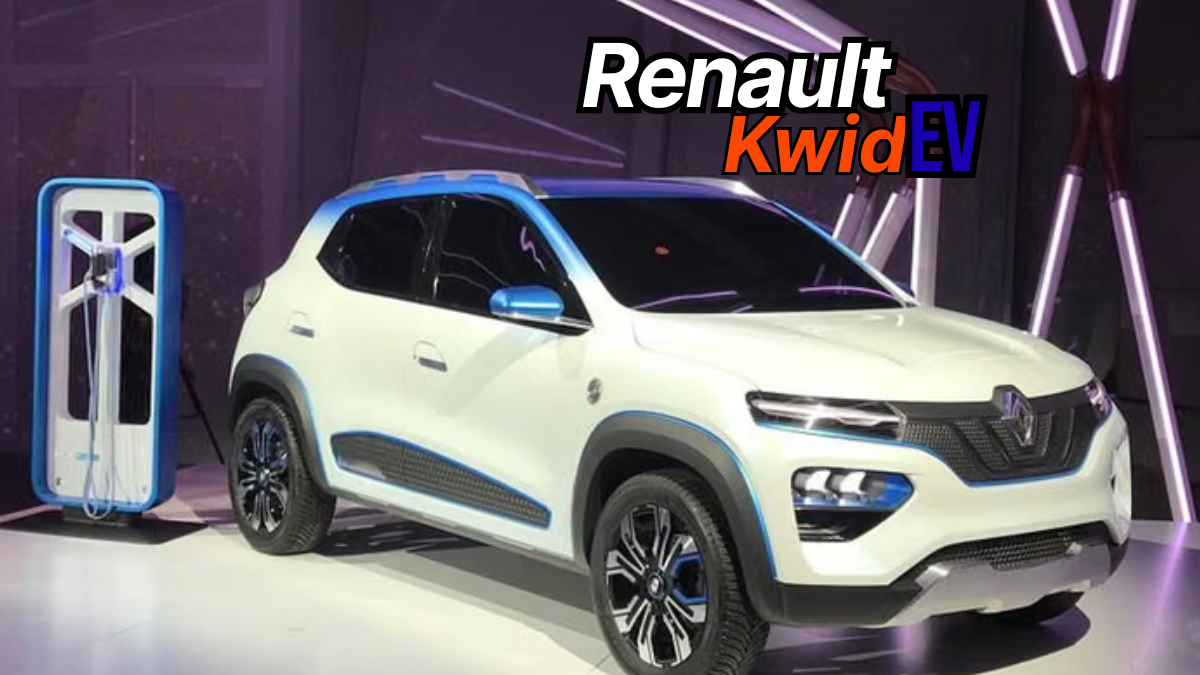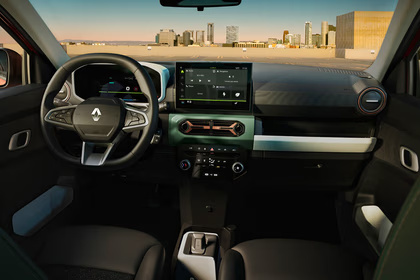The electric vehicle revolution is gaining momentum across India, and Renault appears ready to join the affordable EV race. Recent spy shots from Brazil have given us our first uncamouflaged look at the upcoming Renault Kwid EV, sparking excitement about what could become India’s most budget-friendly electric vehicle.
The French automaker has been quietly developing this electric version of its popular entry-level crossover, with test vehicles spotted across multiple markets including India, Brazil, and China. These sightings suggest Renault is serious about bringing electric mobility to the masses, potentially disrupting the affordable EV segment that currently sees limited options.

For Indian buyers who have been waiting for an electric car that doesn’t break the bank, the Kwid EV could represent a significant milestone. Let’s dive into everything we know about this upcoming electric vehicle and what it might mean for India’s EV landscape.
First Uncamouflaged Images Reveal Production-Ready Design
The most significant development came from Brazil, where the 2026 Renault Kwid EV was spotted without camouflage for the first time. According to reports from Autos Segredos, Renault is reportedly stocking up E-Kwid units in Brazil ahead of an expected launch in the second half of 2025. These units are being imported from Renault’s manufacturing facilities in China.
The Brazilian spy shots reveal a production-ready vehicle that closely resembles the current Dacia Spring sold in European markets, but with Renault badging instead of Dacia branding. Most notably, the vehicle features Renault’s newer logo design, indicating this is indeed a next-generation product rather than a simple rebadging exercise.
The design maintains the familiar Kwid silhouette while incorporating subtle electric vehicle styling cues. The overall proportions remain compact and city-friendly, staying true to the Kwid’s positioning as an entry-level urban vehicle.
Multiple Names, Single Vision
One interesting aspect of this electric vehicle is its various names across different markets. The complexity of Renault’s global naming strategy becomes apparent when examining this single platform:
In China, it’s known as the Renault City K-ZE. Brazil will see it as the Renault Kwid E-Tech or E-Kwid. European markets already know it as the Dacia Spring Electric, which has proven quite popular. There are even Chinese variants like the Venucia e30, Aeolus EX1, and Dongfeng EX1 Pro based on the same platform.
This global approach suggests Renault has high confidence in the platform’s potential across diverse markets with varying customer preferences and price sensitivities.
Expected Features and Specifications
Based on the European Dacia Spring and spy shot analysis, the Indian Kwid EV is expected to offer several modern features while maintaining affordability. The feature list likely includes LED daytime running lights, halogen headlights housed in projector units, and 14-inch steel wheels with body cladding for that crossover appeal.
Inside, buyers can expect a 7-inch TFT instrument cluster and a 10-inch touchscreen infotainment system. Other anticipated features include automatic climate control, cruise control, and a manually dimming interior rearview mirror. However, Renault may need to make strategic feature cuts to meet aggressive pricing targets for the Indian market.
The powertrain specifications are expected to mirror the Dacia Spring, featuring a 26.8 kWh battery pack that powers either a 45 bhp motor or a 65 bhp motor depending on the variant. The promised range stands at approximately 305 km in urban cycle conditions and 225 km in combined WLTP testing.
These numbers suggest the Kwid EV would be perfectly suited for city driving and short intercity trips, addressing the primary use cases for most Indian car buyers.
India Testing Confirms Local Launch Plans
Multiple spy shots from Indian roads confirm that Renault is actively testing the Kwid EV for local conditions. The heavily camouflaged test vehicles have been spotted in various locations, indicating comprehensive validation testing is underway.
This testing phase is crucial for adapting the vehicle to Indian road conditions, climate, and customer preferences. Renault will likely need to optimize the battery thermal management system for India’s extreme temperatures and adjust suspension tuning for local road conditions.
The presence of test vehicles in India also suggests Renault is serious about the timeline for local launch, rather than treating it as a distant possibility.
Potential Market Impact
If Renault prices the Kwid EV aggressively under ₹10 lakh, it could significantly disrupt the Indian EV market. Currently, the MG Comet EV holds the position as India’s most affordable electric car at ₹7 lakh ex-showroom, but it’s limited by its two-door configuration and minimal practicality.

The Kwid EV would offer a more conventional four-door hatchback body style with better practicality for families. This positioning would put it in direct competition with upcoming models from Tata Motors and Maruti Suzuki in the compact EV segment.
The timing appears favorable, with government subsidies under FAME-II and various state-level incentives supporting EV adoption. Consumer awareness and acceptance of electric vehicles has also improved significantly, creating a more receptive market environment.
Production and Launch Timeline
Current reports suggest a 2026 launch timeline for India, which aligns with Renault’s broader electrification strategy. The company has previously announced plans to introduce multiple EVs in India by mid-decade, with the Kwid EV likely serving as the entry point to their electric portfolio.
The global production strategy involves manufacturing in China with exports to various markets. This approach allows Renault to leverage economies of scale while maintaining cost competitiveness.
For the Indian market, Renault may eventually explore local assembly or manufacturing to further reduce costs and take advantage of government incentives for local EV production.
Your Affordable Electric Future Awaits
The Renault Kwid EV represents more than just another electric vehicle launch. It symbolizes the democratization of electric mobility in India, potentially bringing zero-emission driving within reach of middle-class families for the first time.
As testing continues and the 2026 launch approaches, the Kwid EV could play a pivotal role in accelerating India’s transition to sustainable transportation. For buyers currently considering their first electric vehicle, this could be the affordable, practical option they’ve been waiting for.
Keep watching for more updates as Renault moves closer to bringing this potentially game-changing electric vehicle to Indian roads.
Frequently Asked Questions (FAQs)
1. What is the expected price of the Renault Kwid EV?
The Renault Kwid EV is expected to be priced under ₹10 lakh, making it one of the most affordable electric vehicles in India.
2. What is the estimated driving range of the Renault Kwid EV?
The vehicle is anticipated to offer a driving range of approximately 225 kilometers on a single charge.
3. When will the Renault Kwid EV launch in India?
The Renault Kwid EV is expected to launch in 2026, although an exact date is yet to be confirmed.
4. What kind of charging options will the Kwid EV support?
While detailed specifications are not yet available, it is likely to support both standard and fast charging options, following current EV trends.
5. What makes the Renault Kwid EV stand out in the market?
Its combination of affordability, practical electric range, and compact design makes the Kwid EV a strong contender in the budget EV segment in India.
6. Where has the Renault Kwid EV been spotted?
The Renault Kwid EV has been seen undergoing testing on Indian roads, signaling preparation for adaptation to local conditions.
7. Will the Kwid EV have advanced features?
While full details are unavailable, it is expected to include features suited to an electric vehicle in the entry-level segment, like modern infotainment systems and basic driver-assist technologies.
For More Information Click HERE
